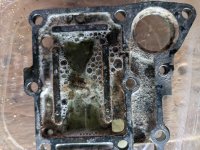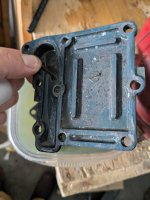kalebsheridan
Petty Officer 1st Class
- Joined
- Aug 14, 2023
- Messages
- 205
So I've been working on an 82 mariner I picked up for $100, and while I've been waiting for parts I decided to try and clean it up. I was told the motor was used in the salt and the oxide and salt buildup in the water passages was indicative of that. Lots of salt and oxide buildup. I wanted to clean that up and saw a video on YouTube of a guy using "lime-a-way" to dissolve the salts in his motor. I found CLR to be basically the same and decided to do an experiment. I know there are other chemicals like HCL and vinegar that people use, but for 4 dollars, I thought I'd give it a try and see what y'all think. Here are the results:























